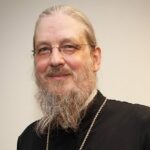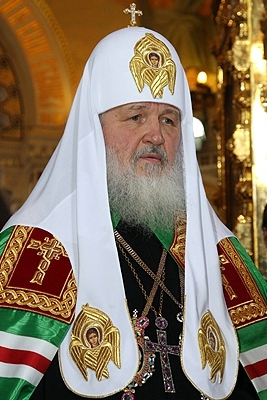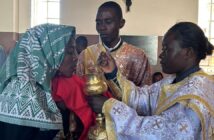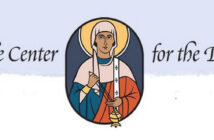Source: Public Orthodoxy
by Very Rev. Dr. John Behr
Regius Professor of Humanity at the University of Aberdeen
In recent days several articles have appeared on this site raising profound, difficult, and unsettling questions. Sr. Vassa bravely asked whether “heresy” is a charge that can be applied to the “Edict” of the XXV “All-World Council of the Russian People,” approved under the chairmanship of Patriarch Kirill of Moscow on March 27, 2024, concluding, rightly, that it does indeed express, in the words of St. Basil about heresy, “a clear difference in the very faith of God” (see also this analysis by Serhii Shumylo). Moreover, Sr. Vassa pointed to the provision of the 15th Canon of the Protodevtera Council of Constantinople of 861, that “those who separate themselves from communion with their primate because of some heresy condemned by the holy Councils or Fathers when he preaches heresy publicly and teaches it openly in the Church…are not only not subject to the penalties prescribed by the rules, but are also worthy of the honor befitting the Orthodox, for they condemn not bishops but pseudo-bishops and pseudo-teachers, and did not by schism cut off the unity of the Church, but attempted to preserve the Church from schisms and divisions.”
Archdeacon John Chryssavgis, accepting the basic soundness of the arguments of those who recognize the heresy of Russkii mir, points to the problem of other Orthodox Bishops doing little to nothing to address this issue adequately. “It would be commendable,” he says, “if Orthodox Bishops were to condemn the Patriarch of Moscow with forceful conciliar consensus, just as it would be admirable if Orthodox Christians were to set in motion a chain reaction of standing up to or protecting themselves against a despotic pastor who himself has strayed.” But rather than a charge of heresy, Chryssavgis suggests that it would be more effective to censure Patriarch Kirill for being “a political bully and a war criminal.” There are, however, no laws, secular or ecclesial, against being “a political bully,” although there are of course laws regarding war crimes. And, in fact, on April 17, 2024, the Parliamentary Assembly of the Council of Europe (Resolution 2540, paragraph 13) has done just that, condemning the rhetoric of Patriarch Kirill and the hierarchy of the Moscow Patriarchate for its “abuse of religion and the distortion of the Christian Orthodox tradition,” emphasizing that “incitement to commit the crime of aggression, genocide and war crimes is a crime in itself.”
War crimes may not be within the sphere of the canonical obligations of the hierarchy, but calling out heresy certainly is. So, why are Orthodox Bishops apparently incapable of doing even this? According to Archdeacon John, Orthodox Churches (by which he seems to mean Patriarchs) are reluctant because of “an agonizing, albeit unavowed acknowledgement that they too are fundamentally plagued by the very same vulnerabilities and flaws. They, too, could be branded as heretics.” As he asks in his essay: ‘How many Orthodox Churches tend toward glorification of nation and state? How many majority-Orthodox nations confound worship of God and salute to the flag? Could it be that most, if not all Orthodox Churches are in fact much closer than they might concede to the perverted Russian ideology?” Finally, to believe otherwise, to hold that Kirill is “a bad apple in a predominantly wholesome batch,” is, in Chryssavgis’ words, “to be locked up in a bubble of self-complacency and self-conceitedness.”
In this dire situation, perhaps the most pressing question to be asked is that of the satirist Juvenal: “Who guards the guardians?” This is indeed a question that we must allow to pierce the bubble of any form of ecclesiology that idealizes or idolizes any position or privilege, that treats the (current) structure as if it is the eternal reality of the Kingdom of God rather than being there to serve the function of, and to be subservient to, proclaiming the Word of God. And this is no mere theoretical questioning; when real human beings are being sent to give their lives in killing others, all in the name of a “holy war,” the distortion of truth—calling black white—is, quite literally, devastating, both for the lives that are at stake and for that which we call, and which is, holy, a true abomination of desolation set up in the temple.
The episcopate—”rightly discerning the word of your truth,” as we pray in the liturgy, so that they might fulfil this role, rather than because they necessarily do so—has come to hold a privileged place as the guardians of the truth and spokesmen for the Church, indeed, often identified with the Church: “Where the bishop is, there is the Church.” I have frequently heard those words quoted to me, too often by bishops, and attributed to St. Ignatius of Antioch. But this is not what St Ignatius says; he says, rather, “Where the bishop is, let the people be present, just as where Jesus Christ is, there is the catholic/universal Church” (Smyrneans 8). It is, by any standard, a mistake to omit Jesus Christ and the people from the equation! Moreover, when St. Ignatius wrote this, the bishop was not in the position we think of the episcopate today: he was the bishop/overseer of a particular household community (as the parish priest is today), not the overseer of a diocese. In due time, of course, as the number of particular communities in a geographical region increased, it was necessary to coordinate their activity, first in larger cities then in ever greater geographical areas. One of the leaders of these communities was entrusted with the task, as “the first among equals” (never “the first without equals”), of calling together the other leaders of the communities to ensure the peaceful and coordinated activity of the churches in the area. As this activity grew, during the third century, councils began to be held, covering ever larger regions and developing a body of canonical legislation to regulate the well-functioning of these structures, and then, with the conversion of Constantine and then the empire (whatever that in fact meant), these structures grew on a scale never even imagined before, opening up the possibility of ecumenical (and, let us not forget, imperial) councils and financial support from the state. All these structures developed for the bene esse, the well-being, of the Church, but as such it must also be remembered that they are not of the esse, the being, of the Church. Even now, when we pray in the liturgy for the bishop, it is so that “he may serve your holy churches in peace”; the diocese is not a “church,” nor is any larger structure, whether or not we have come to customarily speak of a patriarchate or synod as a “church,” a phenomenon exacerbated by the rise of nation states and the corollary “national churches.”
During the early twentieth century, Orthodox Christians, in exile—the proper state of Christian existence in this world—and estranged, in one way or another, from the ecclesial structures of their former homelands came to focus their experience of the Church on the act of coming together to celebrate the Divine Liturgy, in parallel with similar developments in Roman Catholicism: “Where the Eucharist is celebrated, there is the Church.” The fruit of this “eucharistic ecclesiology” was tremendous; indeed, in many ways, it is because of this new sense of the Church that we are able to see, and critique, the problems stated above. However, construing the Church in terms of the eucharistic community (especially when located in the diocese, as with Metropolitan John Zizioulas, rather than the parish, as with Fr. Nicholas Afanasiev) ends up by placing the emphasis on territory, and, subsequently, hierarchy, and so it is perhaps not surprising that eucharistic ecclesiology seems to have morphed, in more recent decades, into an “episcopal ecclesiology”: “Where the bishop is, there is the church!” It is, thus, not surprising that when “ecclesiology” is discussed today it almost invariably focusses on questions of hierarch and territory. Indeed, with the increasing tides of migration, it becomes an existential (and financial) question to identify who “belongs” (by virtue of ethnicity) to whom, to identify “the Russian world” or “the Greek omogeneia,” or whatever else, turning our hierarchs into ethnarchs, leading flag-waving processions of ethnic groups or sending others to their deaths in the name of a “holy war.”
If the episcopal structures, as they have developed throughout history and as we have inherited them, are not of the being of the Church, but evolved for the well-being of the Church, as indeed they were (something I can’t emphasize too greatly), the question we must ask in the light of the problems outlined at the beginning of this essay is: what happens when such structures and positions no longer act for the well-being of the Church?
We are clearly in a time of transition, every bit as momentous as the conversion of Constantine and the empire, although in a reverse direction: we no longer live in Christendom, and are learning, once again, what it is to be in exile in this world. As such, it would not be surprising to find that the forms and structures developed within prior epochs must also evolve, as they did back then, to ensure that structure, once again, serves the purpose of its function. And to do this, it is helpful to go back to the period before such structures were developed, and then identified with the Church, to the period of figures such as Sts. Ignatius and Irenaeus, and behind them the New Testament, where we find other ways of speaking about the Church, not in terms of structures and offices, but as Mother, Bride, and Body. She is our heavenly Mother, the New Jerusalem, in whose womb we are born into life as we enter into the Paschal mystery of Christ, becoming the body of Christ; and as instantiated in the local community coming together as the body of Christ, in this world and for the life of this world, she is the Bride, united as body to her head, the one Lord Jesus. But, it is vital to note, when we speak of the Church in such ways, we are not speaking of those structures and bodies that we have become accustomed to calling “church”; we must be extremely careful in our usage of words, lest we end up transferring to one thing what really belongs to another, and in so doing abdicate our own responsibility.
If we can learn to be precise in our words, however, a vision of the Church opens up in which the answer to the question “Who speaks for the Church?” is broader than we might have initially supposed. When we look back to the last century to consider those who spoke for the Church, our minds turn to those who had something to say, inspiring others by their words and lives, women and men, lay and ordained (and, lest we remain in our “bubble of self-conceitedness,” Orthodox and non-Orthodox)—those whose words and lives continue to inspire us even today, in a way that what are thought of as “official statements of the Church” no longer do, if indeed they ever did. And we will, at the same time, be able to find rest and peace in the hands of God, who draws all to himself in ways we can’t yet see, but also speak out, on behalf of the Church, ourselves discerning the word of truth, both for those who have yet to hear and to those who claim the position of guards but fail in their guardianship.
ABOUT AUTHOR
 Very Rev. Dr. John Behr
Very Rev. Dr. John Behr
Regius Professor of Humanity at the University of Aberdeen




